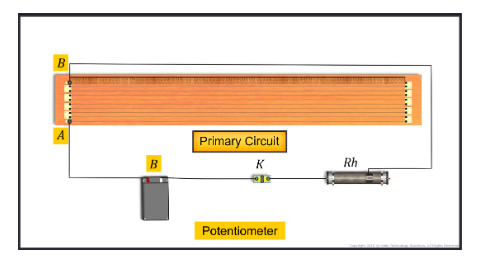Potentiometer
The potentiometer is an accurate device that is used to measure the emf or potential difference more accurately. It is accurate than a voltmeter in the sense that the voltmeter used for measuring p...

Joule in 1841 experimentally studied the heating effect of electric current. He found that the amount of heat, H produce in a conductor due to the flow of current,
(i) is directly proportional to the square of the current flowing through the conductor i.e. H∝I2
(ii) is directly proportional to the resistance across the conductor, H∝R
(iii)is directly proportional to time for which the current is passed, H∝t
Mathematically,
H∝I2 RT
H= I2 RT/J
Where J is called Joule’s mechanical equivalent of heat. Its value is 1/4.2 calorie(cal)
And it is a conversion factor only
Derivation
Expression of heat developed in a wire
When an electric charge Q moves against a p.d. V, the amount of work done is given by
W=Q×V ------------(1)
We know, current, I=Q/t
Q=I×t ------------(2)
By ohm's law,
V=I×R ------------(3)
Putting eqs. (2) and (3) in eq. (1),
W=Q×V
W=I×t×I×R
W=I²Rt
Assuming that all the electrical work done is converted into heat energy,(taking wire as passive resistor ), we get
Heat produced , H=I2Rt joules
This relation is known as Joule's law of heating.